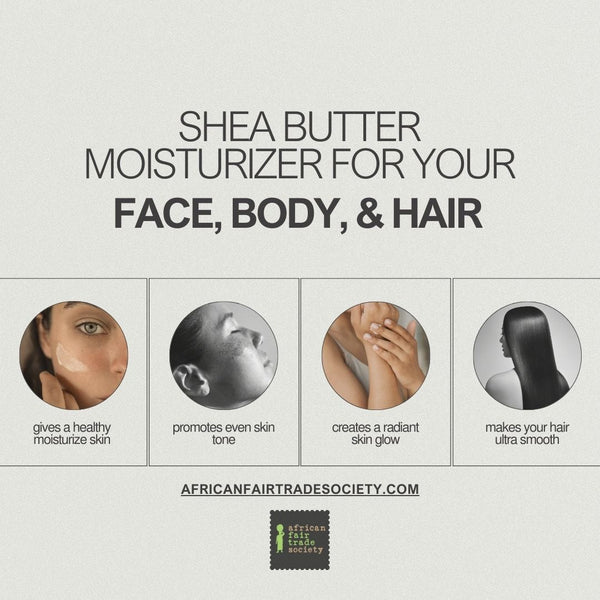The Science Behind Shea Butter: How It Nourishes Your Facial Skin!

When it comes to skincare, it's easy to be lured by exotic ingredients and fancy packaging. But sometimes, the simplest and most natural solutions are the most effective. One such natural wonder is Shea butter. Derived from the nuts of the Shea tree, this unassuming, ivory-coloured substance has been used for centuries to nurture and rejuvenate the skin.
Want to use pure Shea butter for your face? Let’s delve into the science behind this natural element and explore how it works its magic to nourish and revitalize your facial skin.
How Shea Butter Can Nourish Your Facial Skin
Shea butter contains various beneficial elements that contribute to making your skin healthy. Below are some of them:
Fatty Acids
Shea butter is composed of various fatty acids, including oleic acid, stearic acid, linoleic acid, and palmitic acid. These fatty acids provide your skin with essential nutrients, helping to lock in moisture and maintain a healthy lipid barrier.
Vitamin E
Vitamin E is a powerful antioxidant that shields your skin from harmful UV rays, environmental pollutants, and free radicals. Pure Shea butter is a rich source of this vitamin, making it an excellent natural sunscreen. Additionally, vitamin E supports collagen production, reducing the appearance of fine lines and wrinkles.
Allantoin
Shea butter contains allantoin, a compound known for its skin-soothing properties. Allantoin helps in cell regeneration and tissue repair, making Shea butter particularly effective in healing and reducing inflammation on your facial skin. It's beneficial for conditions like acne, eczema, and psoriasis.
Cinnamic Acid Esters
Cinnamic acid esters, such as cinnamate and cinnamein, are found in Shea butter and provide a degree of natural sun protection, with an SPF ranging from 3 to 6. While it's not a substitute for conventional sunscreen, using shea butter can offer an additional layer of protection against the sun's harmful rays. But before using, it’s wise to take a look at Shea butter FAQs.
Anti-Inflammatory Properties
Shea butter's anti-inflammatory properties are attributed to its lupeol cinnamate content. This compound helps alleviate swelling and redness, making it a valuable resource for individuals dealing with conditions like rosacea or other skin sensitivities. It's one of the main reasons people prefer Shea butter for the face.
Emollient Properties
The emollient qualities of Shea butter make it an excellent moisturizer for the skin. It locks in moisture and creates a protective barrier that prevents water loss, making it ideal for dry, flaky, or dehydrated facial skin.
Collagen Synthesis
Shea butter supports collagen synthesis, aiding in the maintenance of skin elasticity and firmness. As we age, collagen production naturally decreases, leading to sagging skin and wrinkles. Shea butter can help slow down this process and keep your facial skin looking youthful.
Conclusion
Whether you are combating dryness, aging signs, or skin sensitivities, Shea butter is a versatile and natural solution that can enhance your skincare routine. So, contact us to embrace the power of Shea butter for your face and experience the transformative effects it can have on your facial skin.



